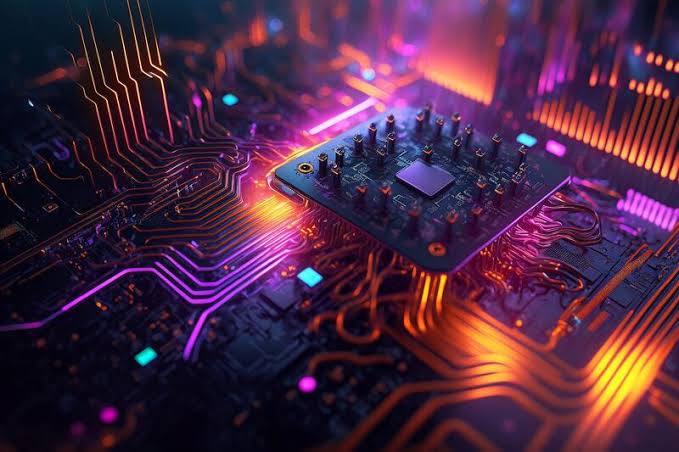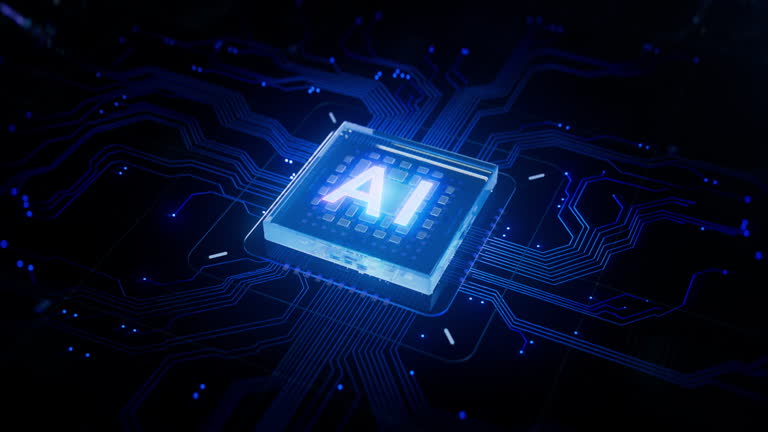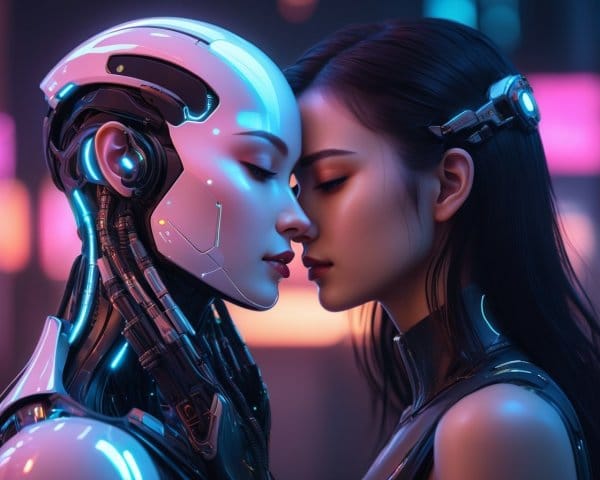Once upon a time, computers were nothing more than calculators with ambition. They could follow instructions perfectly, process numbers at breathtaking speed, and store oceans of data. But they could not imagine. They could not write a poem, paint a picture, or compose a song. They could not invent something that had never existed before. Creativity, it was thought, was uniquely human — born of our messy emotions, chaotic dreams, and unpredictable leaps of thought.
And then, in a quiet revolution unfolding over decades, that assumption began to crumble. Out of advances in computer science, machine learning, and an avalanche of data emerged a strange and powerful new capability: machines that could generate. Generate text. Generate music. Generate images, videos, even code. This was the birth of Generative Artificial Intelligence, or GenAI — a field that does not merely analyze the world, but creates within it.
To some, this was exhilarating: a technological Renaissance where human imagination would be amplified by algorithms. To others, it was unsettling, a glimpse into a future where the boundary between human and machine creativity blurs beyond recognition. To understand what GenAI truly is, and why it matters, we need to journey through its science, its history, and the profound questions it raises about intelligence, originality, and our place in the creative universe.
Understanding the Core: What GenAI Really Means
Generative AI is not just “AI that makes things.” It refers specifically to systems that learn patterns from vast amounts of data and then produce new outputs that share the statistical qualities of that data — but are not exact copies of it. A GenAI model trained on millions of paintings can produce an image in the style of Van Gogh that Van Gogh himself never painted. A model fed on centuries of literature can craft a short story that no human has written before.
The term “generative” stands in contrast to “discriminative” AI models. Discriminative models are classifiers; they learn to distinguish between categories. A discriminative AI might tell you whether an image contains a cat or a dog. A generative model goes further: it can produce a completely new image of a cat or a dog that never existed in reality. This is not mimicry in the simplistic sense — it is statistical creativity, where the model learns the underlying probability distribution of its training data and samples from it to invent something new.
Behind this magic lies mathematics. GenAI operates in high-dimensional spaces where data points — be they words, pixels, or musical notes — can be represented as vectors. In this abstract geometry of meaning, a model learns not only individual features but the complex relationships between them. This allows it to move through these spaces and synthesize combinations that make sense to human perception.
A Short History of Generative Thinking in AI
While the current wave of GenAI feels revolutionary, its roots stretch back decades. The idea that machines could create was explored as early as the 1950s, when computer scientists experimented with algorithmic art and simple rule-based music composition. But the results were limited, constrained by the lack of computational power and the rigid nature of early algorithms.
In the late 20th century, probabilistic models like Markov chains and n-grams began to show that even simple statistical rules could generate sequences of text that felt vaguely human. These early experiments, though primitive, hinted at a deeper potential.
The real breakthrough came with the rise of deep learning in the 2010s. Neural networks, particularly architectures like recurrent neural networks (RNNs) and later transformers, could process sequences and learn rich representations of data. Then came a defining moment in 2014: the introduction of Generative Adversarial Networks (GANs) by Ian Goodfellow and colleagues. GANs set two neural networks against each other — one generating data, the other judging its authenticity — in a feedback loop that pushed the generator to create outputs indistinguishable from real data. GANs revolutionized the creation of realistic images and videos.
Parallel to GANs, a different path emerged with variational autoencoders (VAEs) and eventually transformers like OpenAI’s GPT models. These models learned to generate coherent and contextually rich text, and the transformer architecture proved astonishingly effective at capturing patterns across large sequences. By the early 2020s, transformer-based models had crossed a threshold: they could write essays, answer questions, generate code, and converse with humans in natural language with uncanny fluency.
How GenAI Works: The Science Beneath the Surface
Generative AI is, at its heart, a marriage of statistics, optimization, and high-dimensional representation. The process begins with training data — vast datasets containing examples of the type of output the model will produce. For a language model, this might be billions of words from books, articles, and websites. For an image generator, it could be millions of pictures paired with descriptive captions.
The model learns by adjusting its internal parameters — weights in the case of neural networks — to minimize the difference between its predicted outputs and the actual examples in the training set. This is done through iterative optimization, often using stochastic gradient descent. Over time, the model builds a representation of the statistical structure of the data.
When it generates new content, the model does not copy. Instead, it samples from the probability distributions it has learned. In a text model, given a starting sequence of words, the model predicts the most likely next word, then the next, and so on, chaining these predictions together to form sentences and paragraphs. The sophistication of modern GenAI lies in the fact that these predictions take into account long-range dependencies and subtle contextual cues, producing outputs that can be coherent over extended passages.
In image generation, models often operate in latent spaces — compressed, abstract representations of images — where smooth transitions can be made between concepts. This is why a model can take a prompt like “a cat wearing a spacesuit” and synthesize a plausible, never-before-seen image that satisfies the description.
The Emotional Impact of Machine Creativity
There is something profoundly strange about encountering an AI-generated creation for the first time. You might look at an image and feel convinced a human artist made it. You might read a poem and be moved, only to discover it was assembled by a machine that has never known joy or heartbreak. This raises a deep question: does creativity require consciousness?
Philosophically, many argue that GenAI does not truly “create” in the human sense, because it lacks intent, self-awareness, and emotional experience. Yet from a purely functional standpoint, it achieves a result indistinguishable from human-made work. For some, this is enough to call it creative. For others, it’s a simulacrum — a hollow echo of human imagination.
Emotionally, the existence of GenAI forces us to confront our assumptions about what makes art and literature meaningful. If a song moves you, does it matter whether it was written by a human or an algorithm? Is the value of art in its origin or in its effect? These are not merely technical questions; they touch on identity, authenticity, and the nature of human culture.
The Explosion of Applications
In just a few short years, GenAI has moved from research labs into the mainstream, transforming industries along the way. In design and entertainment, it enables rapid prototyping of visual ideas, storyboards, and characters. In marketing, it generates copy and visuals at scale. In education, it can act as a personal tutor, crafting explanations and examples tailored to each learner. In software development, models like GitHub Copilot assist programmers by generating code snippets, reducing the time spent on routine tasks.
More controversially, GenAI is entering journalism, law, and other domains where the authority and accuracy of information are critical. Its ability to generate convincing text raises the stakes for fact-checking and ethical oversight.
This proliferation is fueled by a combination of technological advances, decreasing computational costs, and the growing availability of pre-trained models that can be fine-tuned for specific purposes. The genie is out of the bottle — and it is generating.
The Challenges and Risks
For all its promise, GenAI carries serious risks. One is the potential for misinformation. A generative model can produce highly convincing fake news articles, deepfake videos, or fabricated evidence. This could be exploited for political manipulation, fraud, or harassment.
Another challenge is bias. Because these models learn from human-generated data, they can inherit and even amplify societal prejudices present in that data. Left unchecked, this can lead to outputs that are discriminatory or harmful.
There is also the matter of intellectual property. If a model is trained on copyrighted material, who owns the rights to its outputs? This is an evolving legal frontier, with courts and legislators scrambling to catch up to the technology.
Finally, there is the existential concern: what happens to human creativity when machines can produce on demand? Will GenAI be a tool that empowers artists and thinkers, or will it devalue human-made work by flooding the world with cheap imitations?
The Future of Generative AI
Looking ahead, GenAI is likely to become more capable, more multimodal, and more integrated into everyday life. Multimodal models that can fluidly combine text, images, audio, and video will make interactions more natural and immersive. Personalized GenAI systems could become constant companions, adapting to individual preferences and contexts with uncanny precision.
We may also see advances in controllability — giving users more fine-grained control over a model’s outputs — and interpretability, helping us understand why a model generated a particular response. This will be crucial for building trust and ensuring safety.
Ethically, society will need to establish norms and regulations for responsible use. This may include transparency about AI-generated content, guidelines for training data, and safeguards against malicious applications.
Ultimately, the story of GenAI is not just about technology. It is about humanity’s relationship with its own creations. Like all powerful tools, it can amplify both our best and worst impulses. Its trajectory will depend not only on what engineers build, but on the values we choose to embed in it.
The Human-Machine Creative Partnership
Perhaps the most hopeful vision of GenAI’s future is one where it becomes a collaborator rather than a competitor. Imagine an architect sketching a rough design and having an AI instantly generate dozens of variations, sparking ideas the architect might never have considered. Imagine a novelist working with an AI co-author that helps with plot structure or character development without replacing the human voice.
In such a partnership, GenAI could expand the boundaries of human imagination rather than replace it. This requires us to see AI not as an alien intelligence, but as an extension of our own cognitive toolkit — a mirror that reflects and refracts our creativity in new and unexpected ways.
Conclusion: The New Frontier of Creation
Generative AI is not just a technological innovation. It is a shift in what it means to create. It forces us to grapple with deep questions about originality, authorship, and the role of human agency in art, science, and communication. Its rise is as thrilling as it is unsettling, promising a future rich with possibility and fraught with challenges.
We stand at the threshold of this new creative era. The tools are in our hands. The outputs will be ours to shape — whether they inspire wonder, sow confusion, or do both at once. And in that sense, the story of GenAI is ultimately a story about us: our ingenuity, our ethics, and our willingness to navigate the strange, exhilarating territory where human and machine imaginations meet.






